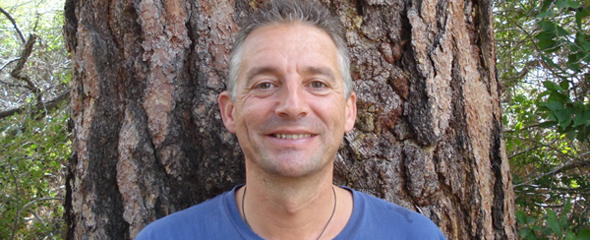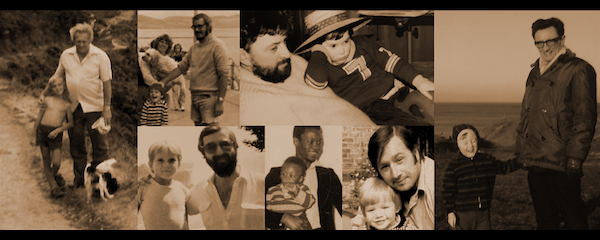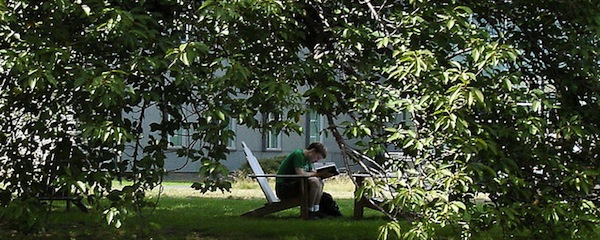
photo © Eric Behrens, 2005
by Mike Smith
The beginnings of stories, and not only short stories, was the first facet of fiction that I began to consciously study, rather than merely notice. There are many ways to begin a short story. You can start with action, or in medias res – Raymond Chandler suggested, in The Simple Art of Murder, if you can’t think of anything else, ‘have a man come through a door with a gun in his hand’. You can describe a character, or have one of them speak. You can have a narrator address the reader, as French writer Alphonse Daudet sometimes did: a funny thing happened to me on the way to…
Examples of just about all the possible techniques for beginning a story are used by Elizabeth Bowen, and these are clear to see in her vast volume of Collected Stories. Here are a few:
Coming up the avenue in the February dusk he could see the flash and shimmer of firelight through the naked window of the library.
~ ‘The New House’
He was a pale little man, with big teeth and prominent eyes; sitting opposite to him in a bus one would have found it incredible that there could be a woman to love him.
~ ‘The Shadowy Third’
“Morning!” exclaimed Gerard, standing before the sideboard, napkin under his arm.
~ ‘Foothold’
By starting a story with the place in which it happens, though, or at which the events, observations or thoughts that it consists of begin, and starting implicitly or explicitly with the time – of day, week, month or eternity – a writer is creating a context that he or she believes will predispose us to expect a particular type of story. This expectation might be subverted, changed or deepened, and it will already have been given the context of the story’s title, if it has one.
Bowen’s story ‘The Cassowary’ and the later ‘A Love Story: 1939’ both begin with place:
Crecy Lodge had stood empty for years; remote from the village it seemed to have been forgotten. The house hung back from a by-road…
Mist lay over the estuary, over the terrace, over the hollows of the gummy, sub-tropical garden of the hotel. Now and then a soft, sucking sigh came from the water, as though someone were turning over in his sleep.
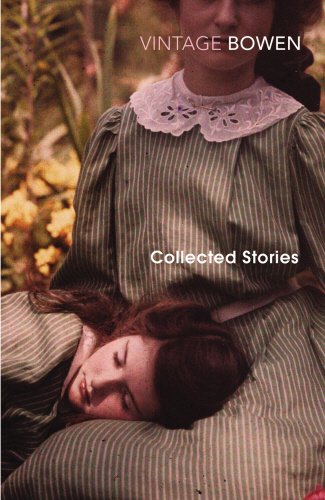 In the first case, ‘The Cassowary’, we reach a named character half-way down the first page; in the second, ‘A Love Story: 1939’, we have to wait until the top of the second page, although the characters have been mentioned namelessly a few lines earlier: ‘Two women came up the steps … the girl steered her mother round the screen to the fire.’
In the first case, ‘The Cassowary’, we reach a named character half-way down the first page; in the second, ‘A Love Story: 1939’, we have to wait until the top of the second page, although the characters have been mentioned namelessly a few lines earlier: ‘Two women came up the steps … the girl steered her mother round the screen to the fire.’
Sometimes Bowen’s opening descriptions of place can go on even further. The beginning of ‘A Walk in the Woods’, for example, sees anonymous figures as part of the landscape, rather than as characters within it: ‘The mysterious thing was that the woods were full of people.’ None of these people are the focus of our story, nor do we see the main characters until near the bottom of the second page.
The riders thudding across a glade were heard, not seen, by a couple in a thicket. These two, in a secret clearing at the foot of an oak, sat on a mackintosh eating sandwiches.
It’s the phrase ‘these two’ that gives the clue that we will now focus on their story, though we have been told as much about several other unnamed groups of people prior to this point. It’s a common technique, not at all exclusive to Bowen, and she doesn’t use it all the time, but she use it often enough that it’s noticeable in her collected works.
In Florence Goyet’s The Classic Short Story, 1870-1925: Theory of a Genre, among many others there is a discussion of the short story being primarily ‘situation’ driven, and situations are created, not by characters, but by the locations in which we find them. It is their reactions to places and times that change, or do not, that makes the story, even in a character-centred approach; a response to his or her situation, to the nature of where and when they are at.
Places, and to some extent time, also contribute an expectation of ambiance. This is the mood, metaphorical or literal, that will pervade at least the beginning of the piece, though that too can be subverted as well as deepened. Here are two of Bowen’s openings, both focussed on places, but with very different atmospheres:
At about nine o’clock on this hot bright July evening the square looked mysterious; it was completely empty, and a whitish reflection, ghost of the glare of midday, came from the pale coloured facades on its four sides and seemed to brim it up to the top.
~ ‘In The Square’
Ann Lee’s occupied a single frontage in one of the dimmer and more silent streets of south-west London. Grey painted woodwork framed a window over which her legend was inscribed in far-apart letters.
~ ‘Ann Lee’s’
It’s worth noting that, in the second example, the name, though of a character, refers predominantly to a place. In the first example there is the unusual linking of ghostliness with light, rather than gloom.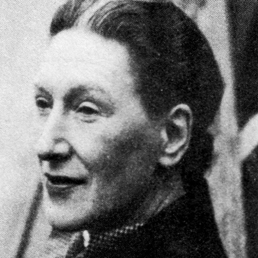
Whatever an author chooses to do at the beginning of a story, it will have the effect of prejudicing the reader’s reaction to what comes next. It will set the mood not only of the story, but of the reading. The words at the beginning of a story carry the greatest burden of this responsibility. They are also, as David Lodge has pointed out in relation to novels, the only ones we come to without the prejudice engendered by having read earlier words.
As I scanned through the entire collection to find my examples, I realised that the reason I had not noticed the ‘place’ element to begin with, was that it features more prominently towards the end of the collection. Most of the early stories begin with a person:
“Behold, I die daily,” thought Mr Rossiter
~ Breakfast
Miss Murchison stopped at the corner…
~ Daffodils
Mr and Mrs Tottenham had come home.
~ The Return
These are, in fact, the first three stories. Could it be that, though we are interested in the characters, we become more focussed on their situations, the critical elements that reveal the character traits, as we become older and more experienced writers?
Is this the lesson that Bowen learnt? It’s difficult to be certain. Though a collection can purport to be chronological, it cannot guarantee that stories were written in the order they have been published. There is also the issue of whether or not we see the author’s trajectory as continuing to ascend. There is also the broader point to consider, of what we might gain as writers from tilting the focus of our short stories towards the examination of situations, rather than of characters, from whether or not, as readers, we find such stories – by Bowen, or any other writer – more satisfying. In either case, though, the beginning cannot help but be our stepping-off point.
